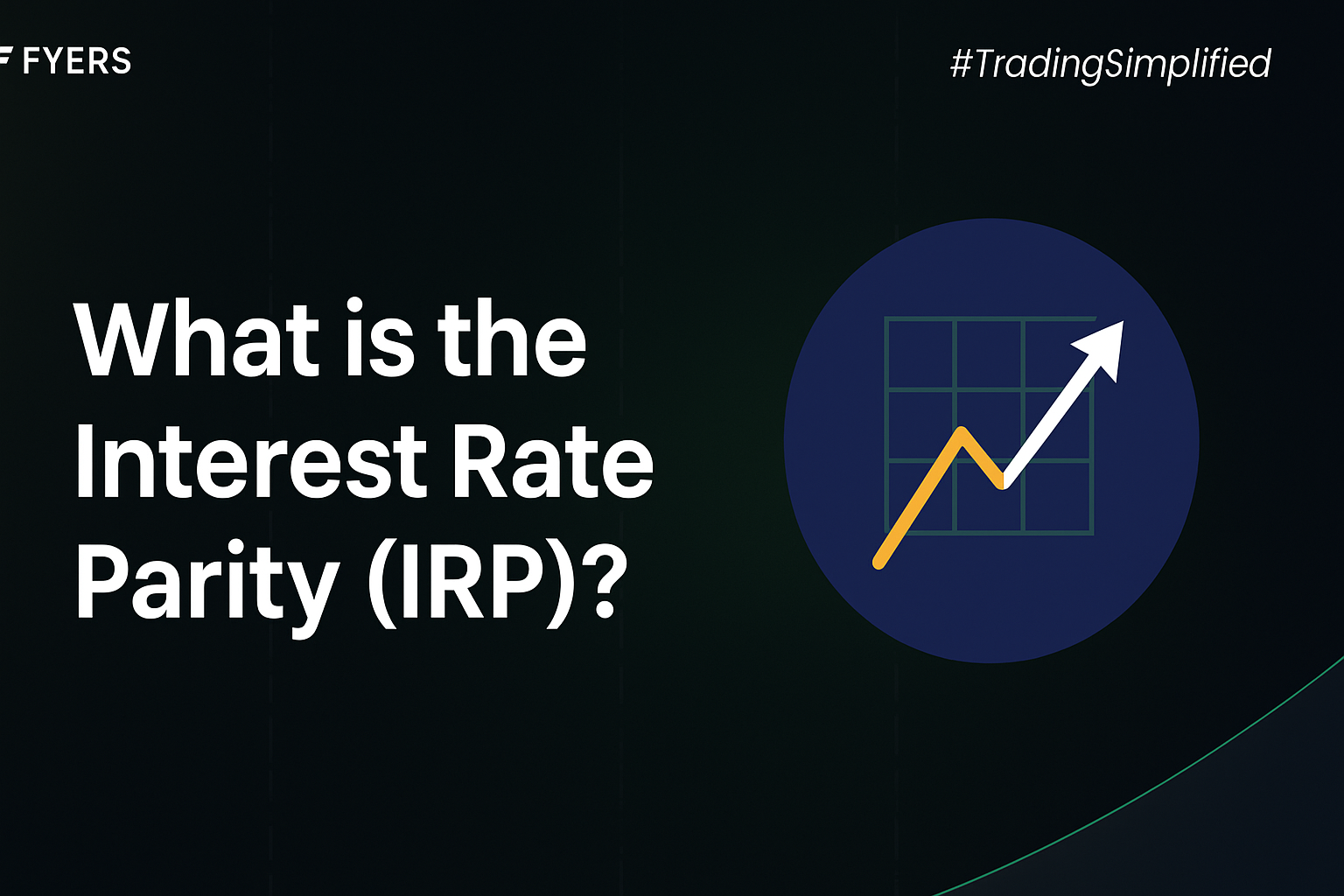

 25 Aug, 2025
25 Aug, 2025
 4 mins read
4 mins read

In global finance, currency exchange rates closely link to interest rates. One of the most important theories explaining this relationship is interest rate parity (IRP). It serves as a base for understanding foreign exchange markets. Traders, investors, and economists often use it to determine if currencies hold fair value.
This blog will break down what interest rate parity means, its types, formula, and real-world application in the stock and forex markets.
Interest rate parity is a theory. It says the difference in interest rates between two countries equals the difference in their forward and spot exchange rates. In simple terms, it makes sure there is no chance for risk-free arbitrage when investing in two currencies.
For example, if interest rates in the US are higher than in India, investors cannot make a risk-free profit. This is true if the forward exchange rate already considers this difference when moving money between the two economies.
There are two major forms of IRP:
Covered interest rate parity holds when the forward exchange rate is used to hedge currency risk. In this case, any differences in interest rates between two countries are balanced by the forward premium or discount. This means that no arbitrage is possible.
Example: A trader borrowing in India at 6% and investing in the US at 4% would also consider the forward exchange rate while converting currencies. If CIRP holds, the forward rate eliminates extra profit opportunities.
Uncovered interest rate parity assumes investors do not hedge with forward contracts. Instead, they rely on expected future spot rates. Here, the difference in interest rates is offset by the expected change in the exchange rate.
Example: If US interest rates are 2% higher than Japan’s, the dollar is expected to depreciate against the yen by about 2% to maintain parity.
The formula for interest rate parity can be expressed as:
F = S × {(1+id)/(1+if)}
Where:
∙ F = Forward exchange rate
∙ S = Spot exchange rate
∙ i_d = Domestic interest rate
∙ i_f = Foreign interest rate
This formula applies to covered interest rate parity. In the case of uncovered IRP, the forward exchange rate is replaced by the expected future spot rate.
|
Basis |
Covered IRP (CIRP) |
Uncovered IRP (UIRP) |
|---|---|---|
|
Hedging |
Uses forward contract to remove currency risk |
No hedging; relies on expected spot rate |
|
Risk Exposure |
Low (hedged) |
High (unhedged, speculative) |
|
Practical Use |
More common in institutional trading |
Mostly theoretical, less reliable |
|
Arbitrage Possibility |
None (by design) |
Possible if expectations are wrong |
Eliminates Arbitrage Opportunities – Ensures fairness in forex markets.
Guides Hedging Decisions – Helps traders decide whether to use forward contracts.
Supports Exchange Rate Forecasting – Especially under uncovered IRP.
Links Interest Rates and Currencies – Explains how monetary policies affect forex markets.
UIRP often fails in reality since exchange rates are influenced by many unpredictable factors like geopolitics, trade flows, and speculation.
Transaction costs and capital controls can prevent IRP from holding perfectly.
Short-term volatility may create deviations, although long-term parity tends to align.
Interest rate parity is a cornerstone concept in international finance. It explains the relationship between interest rates and exchange rates and ensures fair pricing in currency markets. While covered IRP holds strongly in practice due to hedging, uncovered IRP remains more of a theoretical guide.
For investors and traders, understanding IRP is essential for managing forex risks, spotting arbitrage opportunities, and interpreting how global interest rate changes influence currency movements.
It is a theory that says the difference in interest rates between two countries equals the difference between the spot exchange rate and forward exchange rate, preventing arbitrage.
It is a version of IRP where forward contracts are used to hedge currency risk, ensuring no arbitrage is possible.
It is a version of IRP without hedging, where exchange rates are expected to adjust based on interest rate differences.
Covered IRP is more reliable in practice, as forward contracts reduce risk. Uncovered IRP is less consistent due to unpredictable currency fluctuations.
Calculate your Net P&L after deducting all the charges like Tax, Brokerage, etc.
Find your required margin.
Calculate the average price you paid for a stock and determine your total cost.
Estimate your investment growth. Calculate potential returns on one-time investments.
Forecast your investment returns. Understand potential growth with regular contributions.